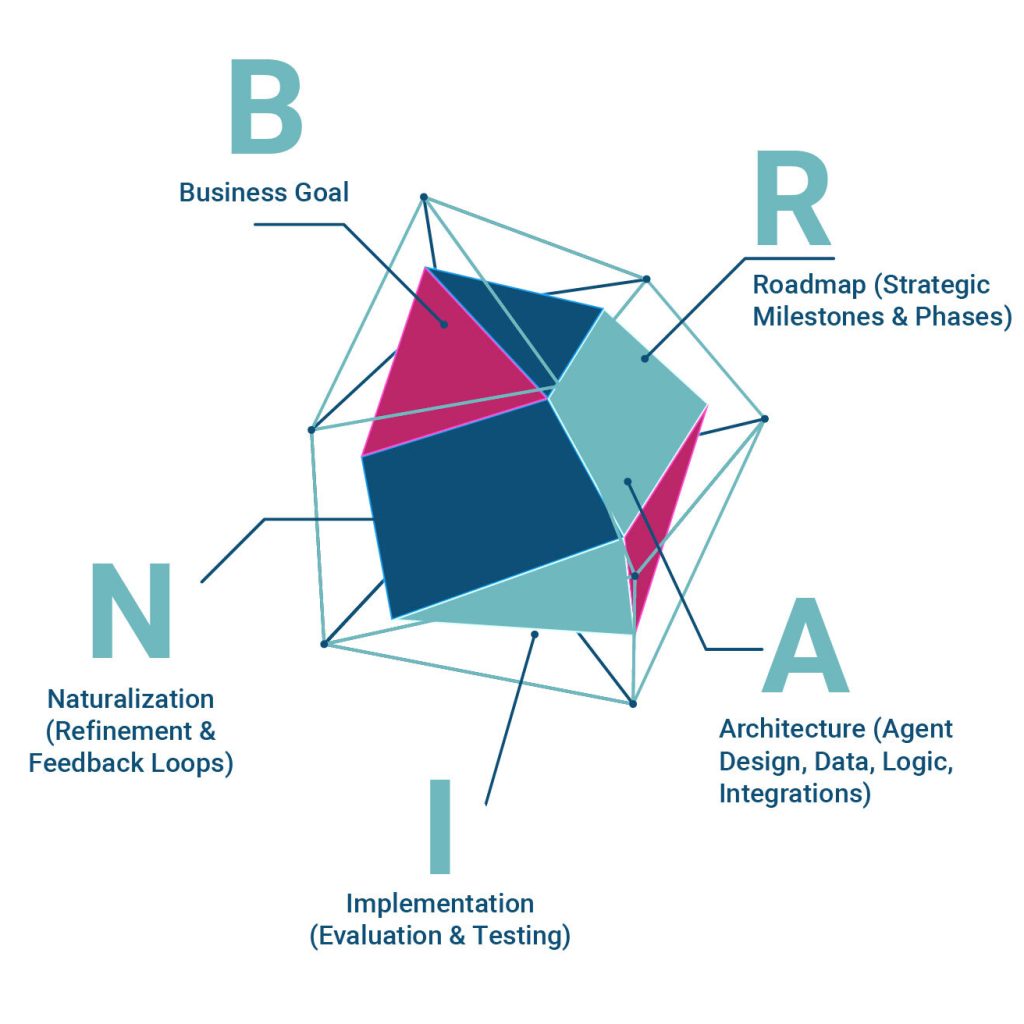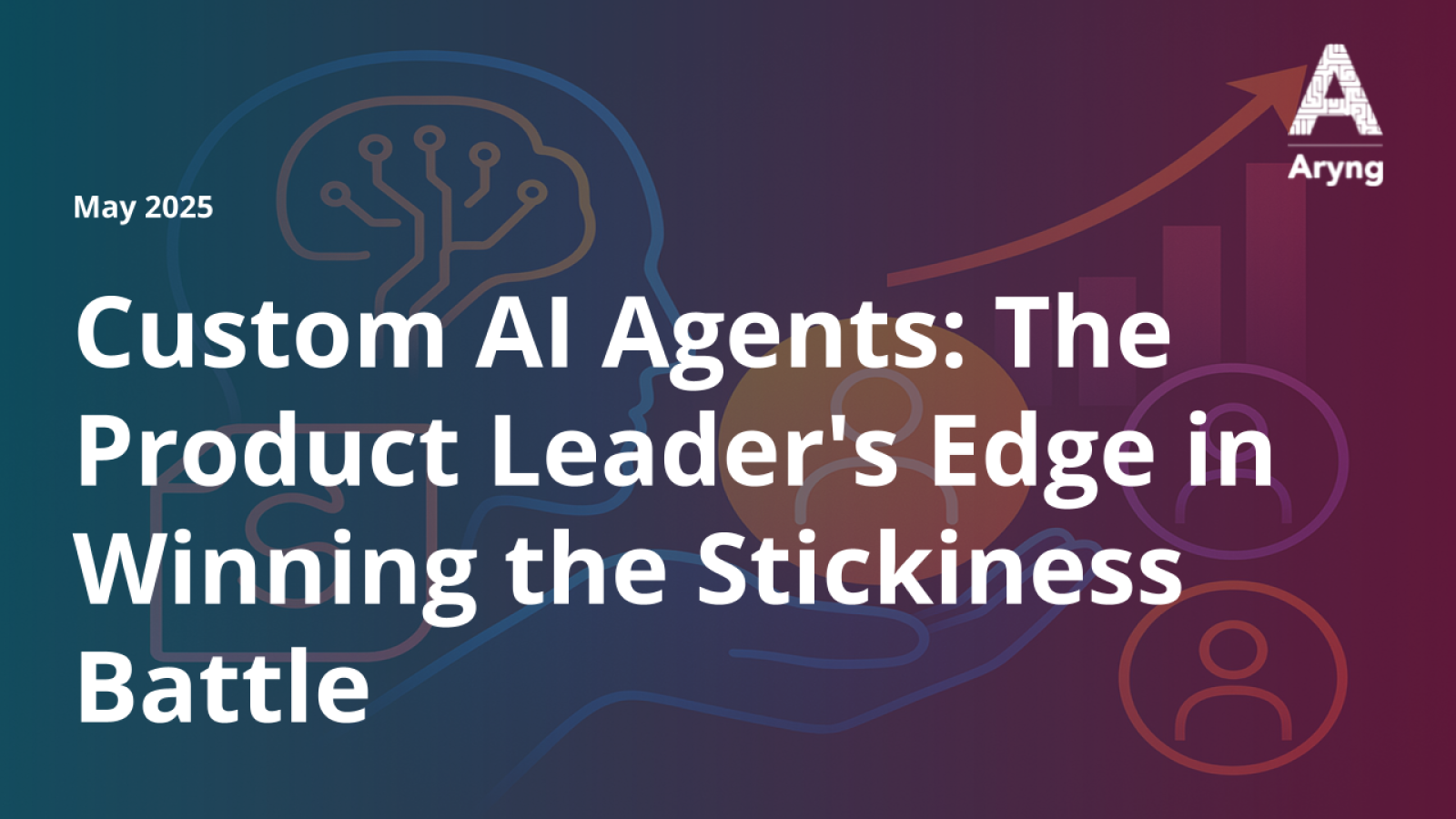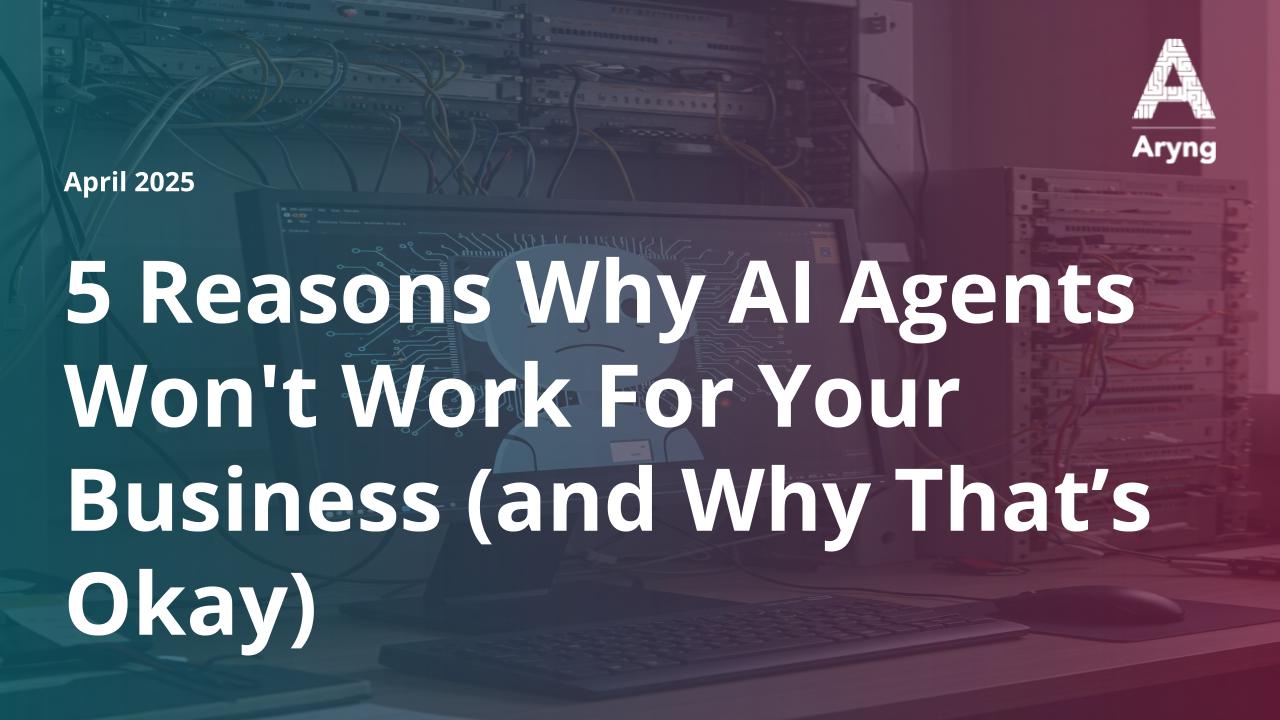Why do you need to think about custom AI agents? Well, you’re more than familiar with the harsh reality that most products lose 70% of their users within the first three days, and acquiring a new customer can cost five to seven times more than retaining an existing one. You don’t need someone else’s statistics to know that, of course, because your own data tells the same story. You are trying your best, but despite your team’s innovative features and intuitive UX, users simply aren’t sticking around. Frustratingly enough, while your dashboards meticulously document this exodus, they offer little help in stopping it.
Meanwhile, competitors who solve this stickiness puzzle are building unstoppable momentum through compound growth, making your quarterly product reviews increasingly uncomfortable.
After all, as Harvard Business Review research shows, increasing customer retention by just 5% can boost profits by 25-95%.
As you look for solutions, you cannot help but notice all the conversations taking place about AI Agents and their use cases for improving user retention. So, what do you do next? How do you decide which agent, if any, can deliver the most value for you?
Why Generic Agents Aren’t Enough
Consider what McKinsey’s research reveals: 71% of consumers expect personalized interactions, and 76% get frustrated when they don’t receive them. This same principle applies to non custom AI agents—generic solutions create generic experiences that users quickly recognize as impersonal.
Currently, the market is flooded with off-the-shelf AI solutions promising to revolutionize all business areas. As a product leader, you’ll easily discover that such promises stand on shaky foundations:
- One-size-fits-all algorithms that don’t understand your unique product usage patterns
- Pre-programmed intervention rules that can’t adapt to your specific user segments
- Black-box solutions that offer little visibility into how decisions are made
- Limited integration capabilities with your existing product telemetry
- Generic engagement strategies that don’t align with your product’s unique value proposition
These solutions may be marginally better than traditional dashboards, but they fall far short of what product leaders truly need: customized intelligence designed specifically for your product’s unique stickiness challenges.
Imagine SafeNest, a growing family-safety and location-sharing app. Their downloads are solid—especially with a free trial of premium features—but conversion and long-term engagement remain weak. Internally, the team knows users are slipping away, but their dashboards aren’t telling them why. Metrics like Daily Active Users (DAU) and the DAU/MAU ratio are well below industry benchmarks, and re-engagement campaigns are falling flat.
This is exactly where custom AI agents could come into play.
To address the stickiness challenge, SafeNest could start with a Segmentation Agent trained on its actual user telemetry, splitting audiences into meaningful behavioral groups like “power users,” “routine check-ins,” and “trial-and-drop.” A Stickiness Insight Agent could then identify what differentiates high-retention segments from those more likely to churn. For example, perhaps a daily alert setup correlates with long-term use, while ignoring setup prompts leads to early drop-off.
From there, a Messaging Agent would deliver targeted nudges, encouraging new users in the “trial-and-drop” group to set up location zones for loved ones within the first 24 hours. Meanwhile, a UX Personalization Agent could surface these setup features prominently for that segment, adjusting the onboarding flow to match their behavior.
Together, these custom AI agents would act not just as analytics tools, but as retention operators, each tuned to improve a specific KPI like 7-day retention, DAU/MAU ratio, or click-through rates on reactivation campaigns. By focusing on product-specific signals and user segments, SafeNest’s team wouldn’t just know where they’re losing users—they’d have an AI-powered system actively working to keep them.
The Custom Agentic: Purpose-Built for Your Product
Custom Agentic operates through custom AI agents tailored to your product’s unique requirements:
Product-Specific Segmentation Agent
Unlike generic solutions that use standard industry segmentations, this agent is trained on your product’s unique user behaviors, identifying segments that matter specifically to your offering.
Custom Stickiness Insight Agent
Analyzes your specific retention metrics and identifies factors affecting engagement in your product context, answering “why” your specific users are disengaging.
Product-Aligned Messaging Agent
Crafts communications that reflect your product’s voice, value proposition, and user journey—not generic engagement templates.
UX-Integrated Personalization Agent
Dynamically adjusts your specific product interface to highlight features most relevant to each user segment’s needs within your specific product ecosystem.
Custom Coordinator Agent
Orchestrates interventions according to your product’s unique rhythms and user expectations.
These custom agents don’t just generate reports, they take immediate action specifically designed to keep users engaged with your product’s unique value proposition. At Aryng, we implement Custom Agentic Analytics through our proprietary BRAIN framework, a systematic methodology designed specifically for product teams seeking to drive measurable stickiness:
Business Goals: We start by defining clear, product-specific objectives that directly impact your bottom line. Unlike generic solutions, this ensures every agent action is aligned with your specific product KPIs.
Roadmap Development: We create a detailed implementation plan tailored to your product’s unique context and user journey, sequencing agent deployment in a way that aligns with your development cycles.
Agents Design: We architect each agent’s capabilities based on your specific product’s needs and usage patterns, not generic templates.
Implementation: We integrate these custom agents with your product telemetry and user touchpoints, ensuring seamless operation within your existing infrastructure.
Naturalization: We establish feedback loops that continuously improve agent performance based on real user interactions with your specific product.

The BRAIN Framework
Unlike one-size-fits-all analytics platforms, the BRAIN framework ensures your agentic system evolves alongside your product, continuously learning from user behavior to drive ever-increasing stickiness. BRAIN derives its DNA from our proprietary BADIR framework, which has been an industry standard since 2011 and is used by leading Fortune 500 companies all over the world.
So far, so good, but how do you get started with implementing all these insights? Well, the next section should help you out with that.
Implementation Roadmap for Product Leaders
As a product leader, you need a practical approach that integrates with your development cycles:
- Start with product-specific objectives
Define exactly what “improved stickiness” means for your specific product. Is it feature adoption? Session frequency? Premium conversion? Set concrete goals aligned with your product KPIs. - Build incrementally, module by module
Deploy agents one at a time. Start with the Segmentation Agent, test it, then layer in the Messaging Agent. This keeps the system flexible and measurable. - Integrate with your product telemetry
Ensure your agents can access and understand all relevant product data signals, not just standard analytics events. - Design interventions that feel native
Create agent actions that align with your product experience and brand voice, rather than generic engagement tactics. - A/B test with your product’s actual users
Treat agent actions as experiments. Test, collect metrics, and iterate. Feedback loops ensure agents get smarter and stay aligned with business changes. - Iterate and adapt
Expect early missteps. Use learnings to refine rules, models, and strategies. The beauty of a modular agent architecture is that you can upgrade one agent without rebuilding everything, allowing for continuous improvement aligned with your product cycles.
Ask Yourself Some Tough Questions
As a product leader responsible for growth metrics, ask yourself:
- Can your system detect disengagement signals unique to your product context?
- Are your personalization efforts based on your product’s actual usage patterns, not generic models?
- Does your current analytics approach understand what makes (or could make) your specific product offering and experience sticky?
If you answered “no” to any of these questions, your product stickiness strategy is likely running on generic insights that aren’t aligned with your product’s unique value proposition.
Your Next Steps:
SCHEDULE YOUR CUSTOM PRODUCT STICKINESS ASSESSMENT WITH ARYNG →
During this complimentary 30-minute session, our product analytics experts will:
- Evaluate your current product analytics approach against industry best practices
- Identify opportunities for product-specific stickiness improvements
- Show you how custom agents could be designed for your specific product context
- Project potential improvements to your product metrics based on similar implementations
The assessment is completely free, with no obligation.
Every sprint cycle that passes is another opportunity for competitors to capture your users’ attention. Don’t settle for generic AI solutions that don’t understand your product’s unique context—take decisive action to make your product truly indispensable to users.
Space is limited to 5 assessments per week—secure yours today.


